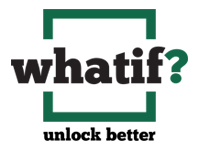“Simply put, people support what they help create.”
The pressure to move quickly leads to shortcuts and shortcuts inevitably lead to mistakes. Sometimes we need to slow down to speed up.
Time to Read: 2 min.
Last week’s Thought Letter built on the IQ + EQ + XQ = VC equation and how value creator leaders are thoughtful consensus builders. It covered how they employ an inquiry mindset to understand the issues and challenges at play, build consensus, and buy-in on the signature issue to address.
After developing clarity on the right problem to solve, value creators next adopt a collaborate to create mindset to form a value creation hypothesis and potential solutions. They know there’s rarely a perfect fit solution for a problem and explore a range of possibilities.
Value creators build on the positive momentum of problem consensus and bring the right people together to:
- Analyze the problem and determine if there’s alignment or mismatch between the data and the customer or stakeholder challenge.
- Create scenarios and explore several options – a few of which are bold and potentially game changing – for debate and consideration. [A what if? storming session is a great first step in the process.]
- Use frameworks to assess their options – e.g. ,business, customer, employee, stakeholder impact – and determine the top three to four to consider.
- Ask what would have to be true for success what capability gaps must be addressed.
- Agree on the best option to pursue and craft a value creation story for relevant stakeholders e.g., Board, CEO, CXOs, and their teams to garner support.
While the above will read as familiar and sensible to most, it requires humility and an openness to others’ input for leaders. It also takes effort and commitment and in today’s operating environment, it’s hard to make the effort and commitment. A CXO recently told me the pressure to move quickly leads to shortcuts and shortcuts inevitably lead to mistakes. Sometimes we need to slow down to speed up.
So how do you approach problem solving and solution development today? Do you spend enough time with your team to formulate scenarios and develop options to consider? On a scale of one-to-ten, how would you rate your, collaborate to create game? What if you followed something like the five points above? How might your team respond? What could you accomplish?
If we make the effort to build consensus and take the time to collaborate on solutions, we will be well down the path to creating value. Simply put, people support what they help create.
Next week, I’ll cover how XQ brings it all together.


Leave a Reply